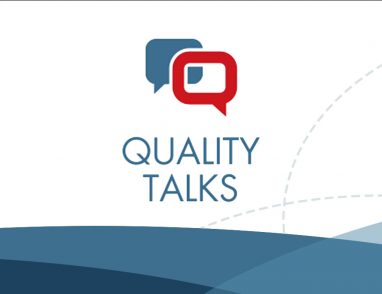Public Policy Weekly Clips: June 28, 2016
June 28, 2016 · Paul Cotton
NCQA gives a rundown of the best national, state and private sector health care articles from the week. Here are our picks for today’s Public Policy Weekly Clips.
National:
Urban says health spending will be $2.6T less from 2014-19 vs. initial projections after ACA passage.
HHS & IRS will reach out to taxpayers who paid fees for lack of coverage to encourage ACA enrollment.
Medicare Trustees say the program will remain solvent through 2028, 11 years more than before ACA.
Medicare ACOs cut ER visits, hospitalizations, SNF spending & spending overall for their sickest patients.
House Republicans unveiled an ACA alternative outline that would tax employees for Cadillac plans.
PWC projects that 2017 health care cost growth will remain flat at roughly 6.5%.
Gallup says 15.5% of Americans could not afford needed health care over the past year – a record low.
HHS & DOJ charged 300 people with $900M in fraudulent billing in the largest-ever health fraud bust.
The HHS IG says over 5% of home health agencies & 4,500 doctors share common fraud characteristics.
SAMHSA released a resource manual & reporting templates for assessing behavioral care effectiveness.
The HHS IG says nearly 1/3d of Medicare beneficiaries got an opioid prescription in 2015.
Doctors who attend drug company free lunches are more likely to prescribe brand-names vs. generics.
The Supreme Court blessed new government procedures for challenging patents that helps generics.
BIO says Institute of Clinical and Economic Review’s drug assessments are biased by insurer funding.
Avalere says most health plans are interested in outcomes-based payments for costly drugs.
Just 20% of stroke patients on statins develop infections vs. 41% for those not on statins.
USPSTF recommends low-dose aspirin to prevent CVD and colorectal cancer in high-risk adults.
High but still normal teen BMI is linked to more cardiovascular & all-cause mortality over 40 years.
Pediatricians are urging family doctors to screen teens for suicide, now their 2nd leading cause of death.
A CDC committee recommended against nasal spray flu vaccine after it failed testing 3 years in a row.
AHRQ says disparities on healthy living measures, i.e. advice on exercise & eating have narrowed.
State:
CDC says no southeastern states have comprehensive laws to protect nonsmokers from tobacco fumes.
Alaska enacted Medicaid reforms to expand primary care case management and ACO demonstrations.
California’s managed care chief supports Anthem/Humana’s merger, unlike the insurance regulator.
Florida BCBS reported $471M in gross profit from its ACA plans in 2015.
Illinois’ co-op joined the list of plans suing the federal government for ACA risk corridor payments.
Indiana says CMS’ plan to assess its Medicaid expansion fails to protect data.
Kentucky wants a waiver to require Medicaid enrollees to pay premiums or be kicked off for 6 months.
Massachusetts wants a Medicaid waiver for greater integration of physical, behavioral & LTSS care.
Minnesota patients in its integrated duals plan are 48% less likely to be hospitalized vs. other duals.
Minnesota BCBS will sell only narrow network individual policies next year.
New Jersey wants a Medicaid waiver to manage behavioral care & enhance value-based purchasing.
New Jersey’s Horizon BCBS won a suit filed by hospitals it kept out of its Tier 1 network.
New York enacted comprehensive opioid legislation that limits prescriptions to a 7-day supply.
North Carolina is the third state to provide unlimited access to a drug that reverse opioid overdoses.
Oregon’s coordinated care Medicaid expansion upped PCMH enrollment & cut readmissions & ER visits.
Private:
The percentage of employers considering private Exchanges plummeted from 35% in 2014 to 6.7% now.
Employers can lower costs by contracting with ambulatory surgery centers instead of hospitals.
A new survey shows that 18% of employers are setting limits for specialty & biotech drugs to lower cost.
Blending health apps with other social purposes can help employers boost employee consumerism.
Some employers are adding a financial health component to boost value of wellness plans.
Employers are cutting traditional & adding non-traditional wellness components like standing desks.









